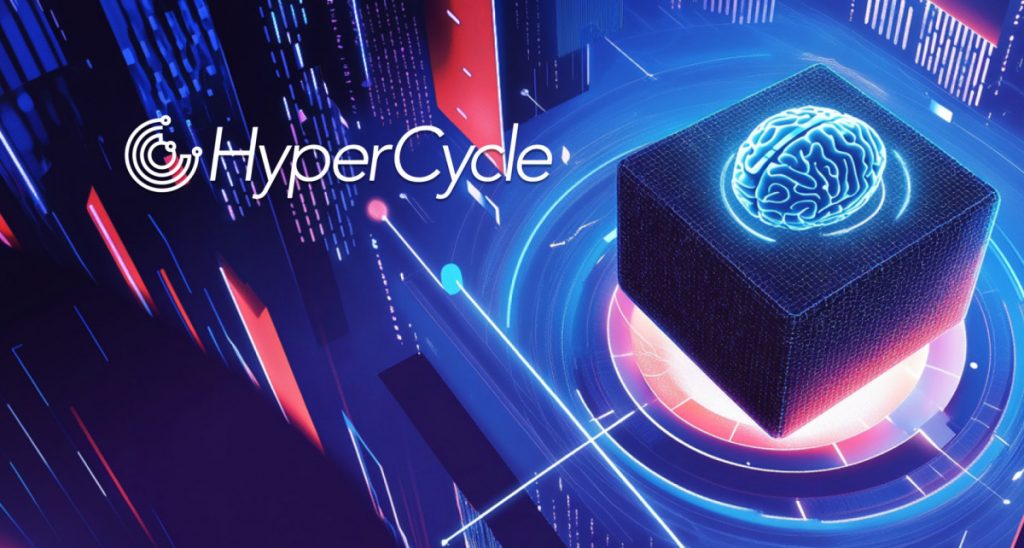HyperCycle Nodes: A Solution To Challenges Of Multiagent AI Systems


In Brief
Collaboration among AI agents improves efficiency and reliability, but challenges in coordination and scalability remain, which HyperCycle Network addresses through its decentralized, scalable infrastructure.

Even highly skilled individuals have limitations when working alone, and the same principle applies to AI agents—collaboration among multiple agents typically produces more effective results than isolated operation. By deploying several agents, tasks can be distributed based on specific capabilities. For example, in logistics, one agent might handle inventory tracking while another manages route optimization, enabling faster and more accurate outcomes.
AI agents have the potential to contribute across nearly all areas of business operations. In customer service, they can work together to identify an issue, propose a resolution, and manage follow-up actions such as issuing refunds or updating billing records. Within supply chains, agents representing various suppliers can collaborate in real time to forecast demand, distribute resources, and adjust logistics processes. They can also evaluate risks, detect potentially fraudulent activities, and support the development of strategies to enhance security.
Using multiple agents simultaneously strengthens overall system reliability by allowing one agent to step in when another fails. This approach is particularly valuable in high-stakes sectors such as healthcare. For instance, a network of agents in a hospital system can dynamically modify staffing levels in response to patient intake, helping to maintain adequate coverage despite persistent global shortages of healthcare professionals. These shortages, projected to affect low-income regions most severely, are expected to result in a deficit of 10 million healthcare workers over the next five years, according to the World Health Organization.
Multiagent AI Systems Face Challenges In Coordination And Interoperability
HyperCycle Network Node Factory offers a novel approach to addressing the common inefficiencies found in deploying AI agents. Traditional multiagent systems often suffer from poor coordination, operate in isolated environments, and place demands on computational resources. Many agents function independently without reliable methods for collaboration or data exchange, leading to fragmentation and reduced system performance. These issues are further compounded by limited interoperability, which restricts agents to their own ecosystems.
The management and training of numerous agents also involve considerable computing power, making scalability an essential factor for maintaining system efficiency and cost-effectiveness as agent networks grow. HyperCycle Network Node Factory tackles these challenges by enabling the development of collaborative and scalable multiagent systems. It facilitates direct coordination and data exchange between nodes, helping to dismantle silos and promote agent interoperability across the network.
The system’s decentralized architecture supports integration of agents developed by different sources, allowing consistent communication standards through the HyperCycle infrastructure. This cohesive framework allows agents to operate together efficiently regardless of their origins. Nodes within the network are designed to self-replicate and scale exponentially, which helps to distribute computational tasks evenly and reduce reliance on extensive infrastructure.
The platform also addresses cost barriers by lowering the financial threshold for participation, making advanced AI technology accessible to organizations of varying sizes. This inclusive design promotes wider adoption of multiagent systems beyond those with financial or technical resources.
Furthermore, HyperCycle’s self-governing nodes operate independently of external control, enhancing system resilience. The Network Node Factory enables participation in economic activities for developers, enterprises, and individuals—even those without specialized technical expertise—by providing a decentralized infrastructure for managing AI agents at scale.
The Mechanisms Driving Exponential Growth In Node Factories
Each Network Node Factory has the ability to expand up to ten times, with the number of nodes doubling at each stage. These factories operate across ten distinct levels, allowing for exponential growth that increases overall system capacity. This structure is designed to meet the growing demand for AI-related services while also creating revenue opportunities for developers. All nodes begin with a baseline reputation score of 1.0 and are required to reach a score of 2.0 before they can generate additional nodes.
This scoring is achieved through two main processes: tilling and compute. Tilling refers to nodes signaling their operational status to the network, while compute measures the volume of tokens processed by a node. Upon reaching the required score, a node creates two new nodes, each inheriting the parent’s operational history. These new nodes are then initialized with a default score and are eligible to contribute to AI-related tasks within the network.
Developers can deploy AI agents within a Network Node Factory using the Aimifier software license, which simplifies the process and accelerates the integration of intelligent agents. This setup promotes agent collaboration and helps resolve persistent challenges related to communication and compatibility across systems. Additionally, agents participating in the network can earn royalties based on their deployment and performance.
Both enterprises and developers are able to oversee and operate their Node Factories through HyperCycle’s decentralized application, which facilitates task delegation, transaction processing, and system monitoring. The HyperCycle Explorer tool provides real-time insights into node performance, including uptime and reputation metrics, offering visibility into the operational status of each node within the network.
Developers Leverage The Collective Capabilities Of Distributed Agent Networks
Developers can create a distributed network of specialized AI agents by deploying them across multiple nodes within the Network Node Factory. Each node can support a different type of agent, such as one focused on communication and another dedicated to data analysis. This approach enables the development of tailored multiagent systems that combine various agent capabilities, helping to resolve challenges related to system fragmentation and limited scalability.
The HyperCycle Network Node Factory operates within a decentralized, peer-to-peer network that leverages Toda/IP’s ledgeless architecture and supports a vast number of interconnected nodes. This structure allows developers to extend the functionality of their AI systems by incorporating agents developed by third parties. For instance, integrating an external analytics agent can enhance performance and facilitate collaborative intelligence sharing throughout the network.
A key feature of this architecture is that it gives AI agents autonomy over their interactions, removing the need for centralized control. Agents are designed to operate with a shared purpose and a mutual understanding of their roles. By eliminating single points of control, the framework distributes computing tasks efficiently and enables fast communication between agents. Security protocols at the enterprise level ensure that interactions and data exchanges remain protected, helping to mitigate privacy risks and support safe, large-scale deployments.
This model redefines the deployment of multiagent systems as a collaborative and adaptive process. It provides the infrastructure necessary to support high-speed, secure, and scalable AI operations. As multiagent AI becomes increasingly relevant in practical applications, addressing the issues of coordination, scalability, and performance becomes essential. The HyperCycle Network Node Factory delivers the technological foundation to meet these demands, enabling effective agent collaboration and operational efficiency for developers and enterprises alike.
Disclaimer
In line with the Trust Project guidelines, please note that the information provided on this page is not intended to be and should not be interpreted as legal, tax, investment, financial, or any other form of advice. It is important to only invest what you can afford to lose and to seek independent financial advice if you have any doubts. For further information, we suggest referring to the terms and conditions as well as the help and support pages provided by the issuer or advertiser. MetaversePost is committed to accurate, unbiased reporting, but market conditions are subject to change without notice.
About The Author
Alisa, a dedicated journalist at the MPost, specializes in cryptocurrency, zero-knowledge proofs, investments, and the expansive realm of Web3. With a keen eye for emerging trends and technologies, she delivers comprehensive coverage to inform and engage readers in the ever-evolving landscape of digital finance.
More articles

Alisa, a dedicated journalist at the MPost, specializes in cryptocurrency, zero-knowledge proofs, investments, and the expansive realm of Web3. With a keen eye for emerging trends and technologies, she delivers comprehensive coverage to inform and engage readers in the ever-evolving landscape of digital finance.


















































